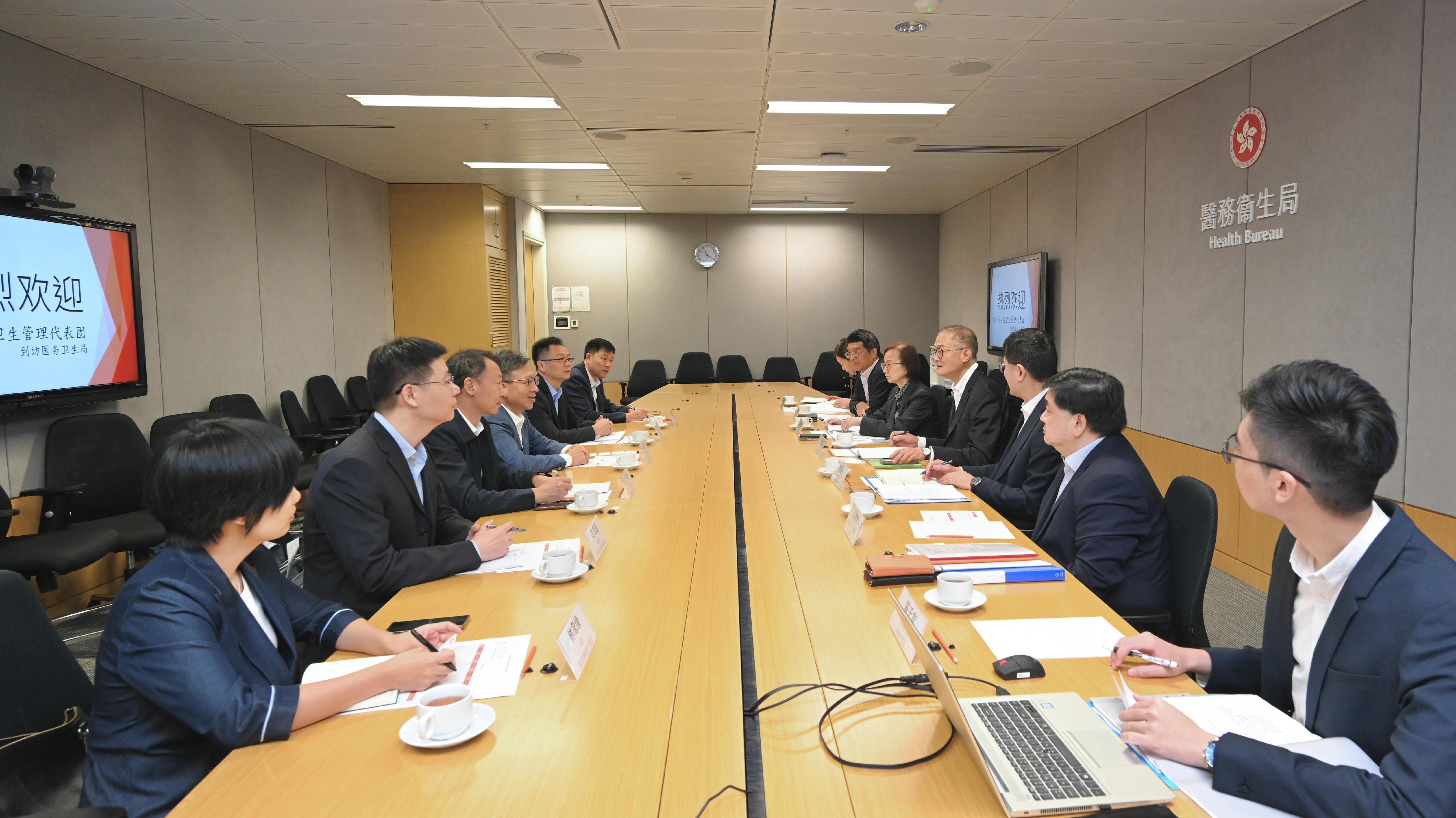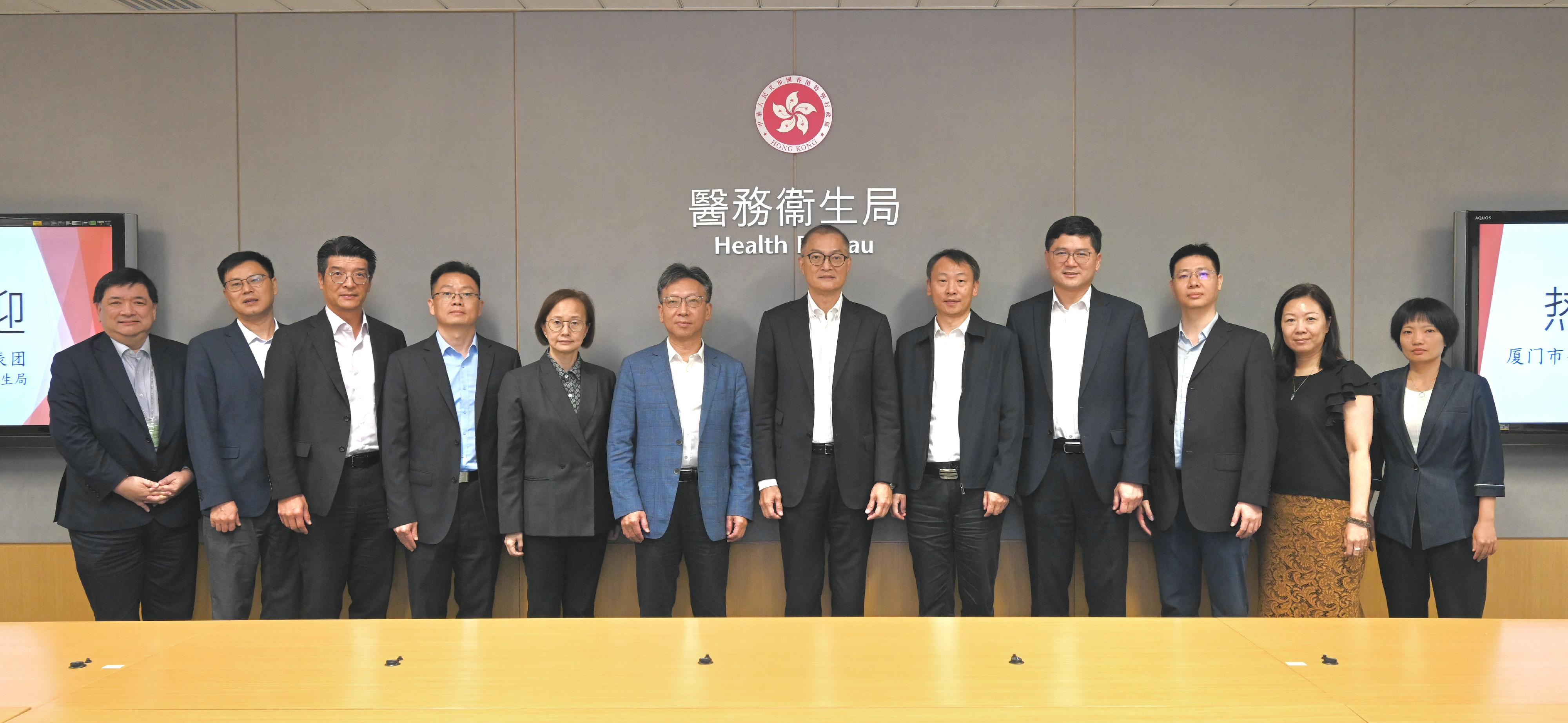Following is a question by the Hon Benson Luk and a written reply by the Secretary for Security, Mr Tang Ping-keung, in the Legislative Council today (October 18):
Question:
The authorities made the first-ever extreme conditions announcement amidst a once-in-500-years event of torrential rain and flooding last month. In this connection, will the Government inform this Council:
(1) of the mechanism for making an extreme conditions announcement;
(2) whether it has compiled statistics on the number of persons from organisations of local communities, such as the District Services and Community Care Teams, who participated in coping with the aforesaid extreme conditions; if so, of the details; if not, the reasons for that;
(3) of the number of civil servants (and among which, the number of disciplined services staff) mobilised by the Government to participate in coping with the disaster relief and recovery work of the aforesaid extreme conditions; whether the related operations involved additional public expenditure; if so, of the details; if not, the reasons for that;
(4) whether it has formulated a mechanism to disseminate alerts about natural disasters to members of the public through the Emergency Alert System, so that they can stay vigilant and make timely responses; if so, of the details; if not, the reasons for that; and
(5) whether it has formulated a more comprehensive response plan for making better preparations in the event of extreme conditions in the future; if so, of the details; if not, the reasons for that?
Reply:
President,
In consultation with the Civil Service Bureau (CSB), the Commerce and Economic Development Bureau (CEDB), the Development Bureau (DEVB), the Environment and Ecology Bureau (EEB), and the Home and Youth Affairs Bureau (HYAB), our consolidated reply to the question raised by the Hon Benson Luk is as follows:
The Government has developed a dynamic and proactive disaster management strategy to address actions required before, during and after a disaster as well as post-disaster review, and has also set out the duties of all relevant bureaux and departments (B/Ds) so that they could work in close partnership according to the contingency plan.
Every year before the typhoon season, the Security Bureau (SB) organises an interdepartmental exercise to enhance the collaboration of B/Ds and other parties concerned in handling possible emergency situations if Hong Kong is struck by a typhoon. This year’s interdepartmental exercise was held on May 18, with the participation of representatives from around 40 B/Ds and other organisations concerned.
(1) In the event of super typhoons or other natural disasters of a substantial scale, a steering committee will be set up under the chairmanship of the Chief Secretary for Administration with relevant Principal Officials as members to enhance co-ordination in the preparedness, response and recovery stages. The Emergency Monitoring and Support Centre (EMSC) of the SB, together with relevant B/Ds, would assist the Steering Committee in assessing the impact the natural disasters may have on Hong Kong. In the event of extreme and widespread impact, such as large-scale power outage, extensive flooding, major landslides and serious obstruction of public transport services, the Steering Committee will consider making the extreme conditions announcement. Furthermore, following the passage of a typhoon, if there are factors that would seriously affect the working public to resume work effectively for a prolonged period, the Government may also make the extreme conditions announcement to advise the public to remain at safe places.
(2) The first extreme conditions announcement was made by the Government in early September. At the time, District Services and Community Care Teams (Care Teams) in Tsuen Wan and Southern District were already established. Respectively, around 120 and 170 Care Team members and volunteers were mobilised to assist in temporary shelters and other follow-up actions.
Care Teams in the remaining 16 districts were also established in mid to late September. They would be mobilised in times of inclement weather, such as typhoons, to provide appropriate services to those in need.
(3) The SB activated the EMSC to co-ordinate the actions taken by the substantial manpower from departments handling the emergency situations, including the Information Services Department, various works departments, the Transport Department and the Hong Kong Observatory (HKO), to deal with the various extreme situations arising from the torrential rain. The Hong Kong Police Force, the Fire Services Department, the Home Affairs Department and District Offices, etc also mobilised all available manpower to handle the issues arising from the rainstorm, as well as to assist in the recovery of the city. Respective departments did not maintain detailed statistics on the manpower deployed. Meanwhile, the Civil Aid Service and the Auxiliary Medical Service mobilised close to 300 members to assist in the rescue and medical treatment work.
The Government also activated the civil service mobilisation protocol to deploy civil servants of non-emergency services departments to provide support, with a view to restoring normal community operations and resuming citizens’ daily lives as early as possible. To cope with the widespread impact of the rainstorm and flooding, the Government activated the mobilisation protocol on three occasions after the extreme conditions ended, mobilising some 510 civil servants from 13 B/Ds (including 20 law enforcement officers from the Independent Commission Against Corruption) to assist in clearing roads, homes and school premises, and in applying for emergency relief funds for persons facing financial hardship as a result of the disaster. Expenditure arising from the mobilisation protocol was absorbed by the Government’s general revenue.
(4) Launched in November 2020, the Emergency Alert System (EAS) aims to enable B/Ds to disseminate time-critical public announcements and messages (EAS Messages) to mobile service users during unforeseen emergency situations that may cause territory-wide/large-scale outage of critical infrastructure or extensively endanger lives and properties.
There are two alert levels of EAS Messages, namely “Emergency Alert” for emergency situations that may extensively endanger lives and properties (e.g. extensive infrastructure damage after massive typhoons), and “Extreme Emergency Alert” for extremely urgent situations requiring immediate notification to citizens for protection of lives and properties (e.g. serious earthquake, tsunami, terrorist attack).
According to the established mechanism, under truly justified emergency situations, B/Ds may, after obtaining the approval of the relevant Director of Bureau (and the Chief Secretary for Administration in the case of “Extreme Emergency Alert”), disseminate EAS Messages through the EAS terminals as far as practicable so as to facilitate members of the public to take immediate responsive actions.
(5) Government departments will make effective preparations, response, and recovery actions with respect to typhoons, rainstorms or other natural disasters. For example, prior to the rainy season and before the onset of a typhoon or rainstorm, the Drainage Services Department (DSD) will make pre-arrangements to inspect and clear the public drainage systems, including rivers, open nullahs, drainage gullies and roadside drainage systems, to prevent them from being clogged by debris such as mud, stones, leaves and rubbish. Departments under the DEVB and other relevant Government departments, including the tree management departments, works departments and the Buildings Department, will step up inspection, preparatory works and other preventive measures, including removing signboards with obvious danger, managing roadside trees with risk of falling, and ensuring that construction sites have implemented measures to effectively cope with the impacts of inclement weather.
The DEVB will activate the Emergency Command System on a needs basis to assist works departments in co-ordinating and flexibly deploying emergency works resources, including machinery, tools and manpower to carry out emergency remedial work expeditiously. This may include the clearing of fallen trees on roads, and the handling of flooding and landslide incidents. After the extreme weather conditions have subsided, departments under the DEVB and other relevant Government departments will immediately commence dedicated inspections to identify slopes, trees and structures with potential risks, and carry out necessary emergency removal, clearance and repair works to ensure public safety.
The HKO will also enhance information dissemination related to heavy rain and brief the media hourly with a video about the latest weather condition when Black Rainstorm Warning is in force to allow the general public to get hold of the latest situation and forecast.
In addition, the Government will review the content of relevant contingency plan in the light of experience gained from the handling of natural disasters, so as to ensure that the plan can be further improved and kept abreast of development. The Government conducted such a review after Super Typhoon Mangkhut battered Hong Kong in 2018, focusing on enhancing the preparations for natural disasters, the efficiency in clearing fallen trees and other debris, as well as arrangements for resumption of work in the wake of super typhoons.
The Government is currently conducting a review with the experience gained from the handling of typhoons, rainstorms and flooding in recent months, to improve our ability to handle natural disasters and enhance the safety factors in order to minimise the impact natural disasters may bring to the public. read more



